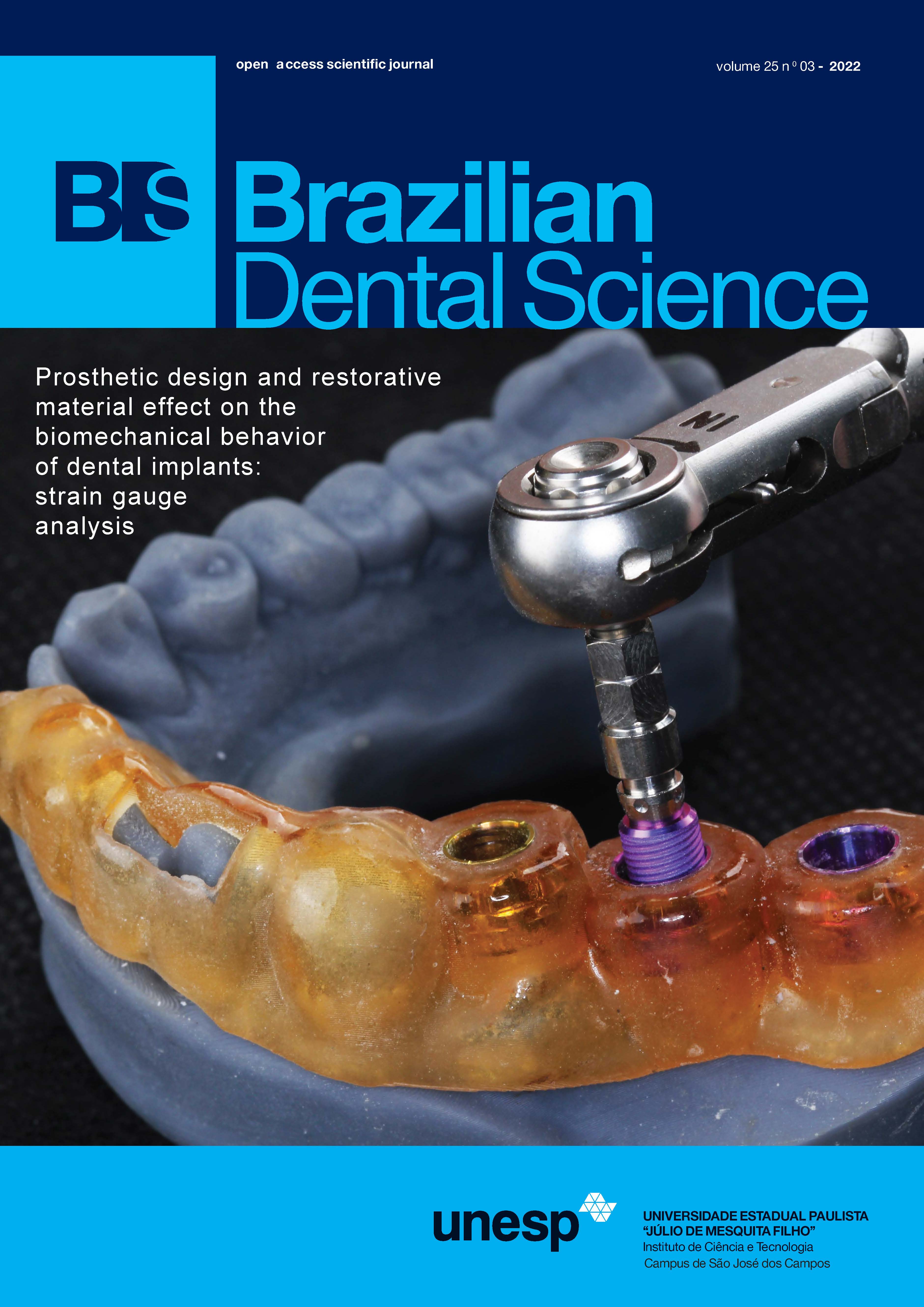Assessment of relapse of skeletal open bite treatment in adult patients treated with molar intrusion using temporary anchorage devices and orthognathic surgery - a systematic review
DOI:
https://doi.org/10.4322/bds.2022.e3255Abstract
Objective: The purpose of this study is to systematically assess the available evidence for relapse of skeletal
open bite treatment using temporary anchorage devices and orthognathic surgery. Materials and Methods: Five
electronic databases such as MEDLINE, COCHRANE, SCIELO, GOOGLE SCHOLAR, EMBASE were systematically
searched up to June 2020. Methodological quality studies were graded by means of the Effective Public Health
Practice Project (EPHPP) Quality Assessment Tool. Results: In total, 1005 studies were identified for screening,
and 6 studies were eligible. The quality assessment tool showed moderate quality for all the studies. The
immediate post treatment correction of open bite was better in the surgical studies than in the studies treated
with TADs. Conclusion: Stability of treatment results of anterior openbite was comparable in cases treated in
both the treatment modalities. Relapse of anterior open bite was associated with cases in which the posttreatment
overbite was minimal. Overbite seems to be more stable when only the maxilla has been operated on than with
bi-maxillary surgeries. Counterclockwise rotation of the mandible with subsequent reduction of anterior facial
height was better in surgical correction than through TADs.
KEYWORDS
Skeletal open bite; Temporary anchorage devices; LeFort 1 impaction; Bi-maxillary surgery.
Downloads
Downloads
Published
How to Cite
Issue
Section
License
Brazilian Dental Science uses the Creative Commons (CC-BY 4.0) license, thus preserving the integrity of articles in an open access environment. The journal allows the author to retain publishing rights without restrictions.
=================




























